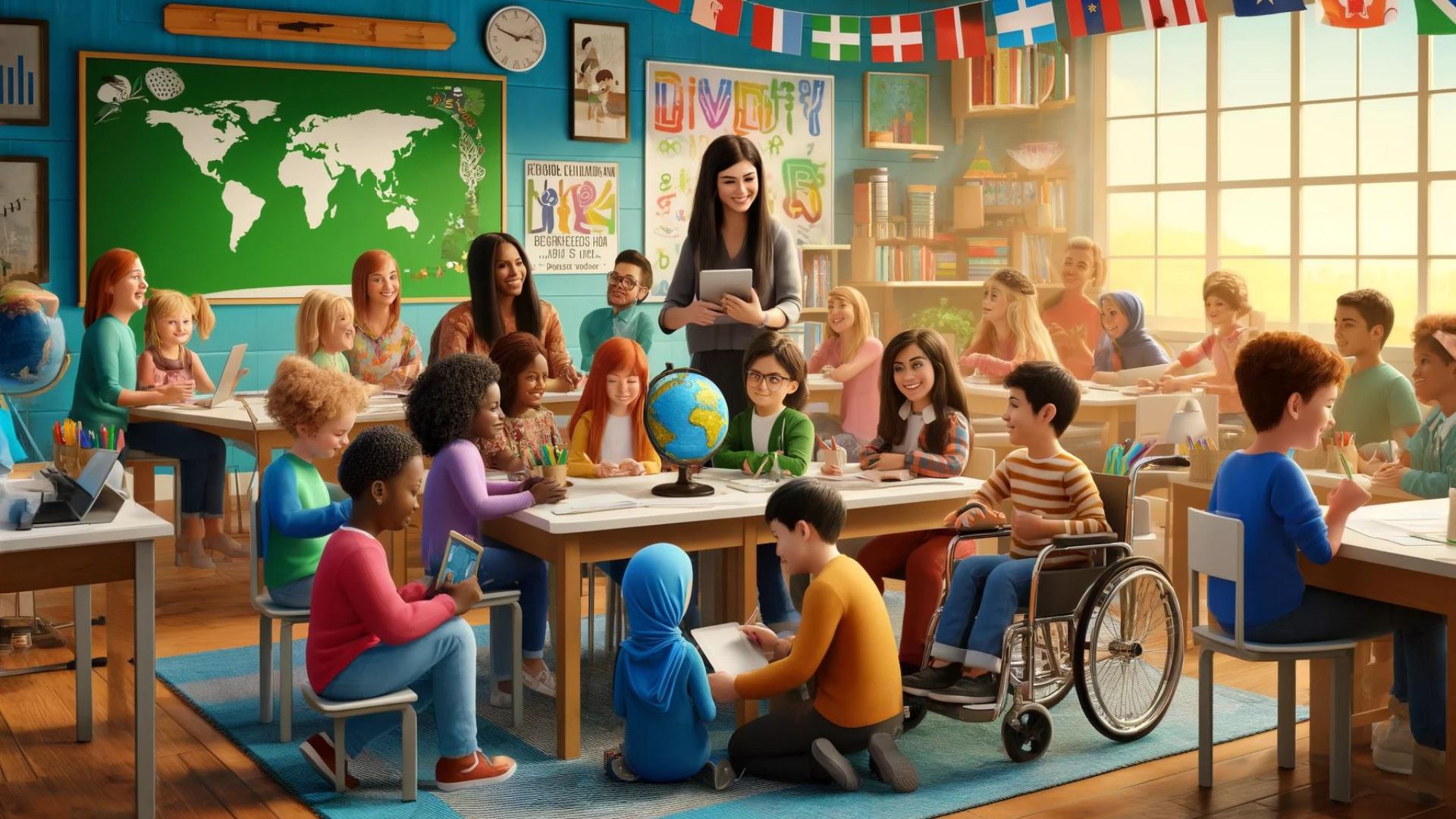Picture a classroom. Now, try to imagine that every single student looks the same, comes from the same background, and has the same life experiences. Pretty boring, right? The reality is that our classrooms are wonderfully diverse places filled with students from all walks of life.
Promoting diversity and inclusion in education isn’t just about being nice – it’s about unlocking the potential of every single student and creating a better world.
What is Diversity? What is Inclusion?
- Diversity: The variety of backgrounds, identities, and perspectives present in a group. This includes race, ethnicity, gender identity, sexual orientation, religion, socioeconomic status, abilities, and more.
- Inclusion: Creating an environment where everyone feels valued, respected, and has equal opportunities to participate actively and succeed.
Why It Matters: Real-World Impact
- Stronger Learning for Everyone: Exposure to diverse perspectives sparks critical thinking and creativity. Students learn to problem-solve in a diverse world. Think of all the innovations that might come from kids with different ways of thinking!
- Reduced Prejudice and Bias: Inclusive classrooms promote empathy and dismantle harmful stereotypes. This creates a more just society overall.
- Preparedness for the Future: The world is interconnected. Students who understand and collaborate with people from different backgrounds thrive in the global workforce.
- It’s About Fairness: Every child deserves a chance to learn and reach their potential. Inclusive schools make this possible, removing barriers so everyone can succeed.
In the Classroom & Beyond
Here’s what diversity and inclusion looks like:
- Curriculum That Reflects the World: Do the stories you read and the historical figures you learn about represent diverse experiences?
- Celebrating Differences: Does your school create space for all cultural traditions and holidays to be acknowledged?
- Challenging Stereotypes: Do teachers call out biased language and behavior? Is there room for respectful conversations about difficult topics?
Action Point
Whether you’re a student, parent, teacher, or just a concerned citizen, you have a role to play! Here’s how to make a difference:
- Educate yourself about different cultures and perspectives: Seek out books, documentaries, and conversations that broaden your understanding.
- Speak up against discrimination: Don’t let hurtful comments or actions slide. Be an ally and support those who are targeted.
- Support inclusive policies: Vote for school board members and support initiatives that create more equitable, inclusive classrooms.
Imagine a world where everyone feels like they belong, where their unique talents can shine. True diversity and inclusion in education helps make that world a reality.
Why Should You Care?
- Fostering a more just society: Inclusive education dismantles prejudice and systemic barriers, leading to a fairer world for everyone.
- Enriching learning experiences: Diverse classrooms promote critical thinking skills, empathy, and prepare students for an interconnected world.
- Championing equity: Diversity and inclusion in education ensure that every child has the opportunity to reach their full potential.
Key Takeaways
- Diversity encompasses multiple aspects of identity, going beyond just race or ethnicity.
- Inclusion means actively creating an environment where everyone feels valued and has equal opportunities.
- Promoting diversity and inclusion benefits all students not just those from marginalized groups.
- Building inclusive classrooms involves rethinking curriculum, celebrating differences, and challenging biases.
Keywords
- Diversity: The presence of a wide range of human qualities and attributes within a group or setting.
- Inclusion: Creating environments where everyone feels welcomed, respected, supported, and valued to fully participate and succeed.
- Equity: Fair and just practices that account for systemic disadvantages, ensuring everyone gets what they need to succeed.
- Prejudice: Preconceived negative opinions or judgments towards a person or group based on their identity.
- Bias: An inclination for or against something, often unconscious, that can influence our actions.
- Curriculum: The subjects and topics taught in a school or course of study.
- Stereotypes: Oversimplified, often negative generalizations, about groups of people.
- Marginalized groups: Groups of people excluded or pushed to the edges of society, often due to discrimination.
- Ally: Someone from a non-marginalized group who actively supports and advocates for a marginalized group.
- Systemic barriers: Policies, practices, and norms within institutions that create disadvantages for certain groups.
Frequently Asked Questions
- What can an individual teacher do to promote diversity and inclusion? Educators can examine their own biases, integrate diverse perspectives into lessons, and facilitate discussions about challenging topics in a safe way.
- Does focusing on diversity distract from overall academic achievement? On the contrary, research shows inclusive environments actually enhance learning outcomes for all students.
- Isn’t it enough to simply ‘not be racist’? True inclusion requires actively creating a climate where everyone feels they belong and can thrive.
Myth Buster
- Myth: Diversity and inclusion are only relevant in highly diverse schools.
- Reality: Even seemingly homogenous settings have diversity. All classrooms benefit from inclusive practices and teaching about diverse perspectives.
Let’s Talk!
- Have you noticed examples of either great inclusivity or a lack of it within your school experience?
- What’s one small step you could take today to promote inclusion in your community?
- If you’re a teacher, what challenges have you faced in creating an inclusive classroom?
Share your thoughts in the comments below!










0 Comments